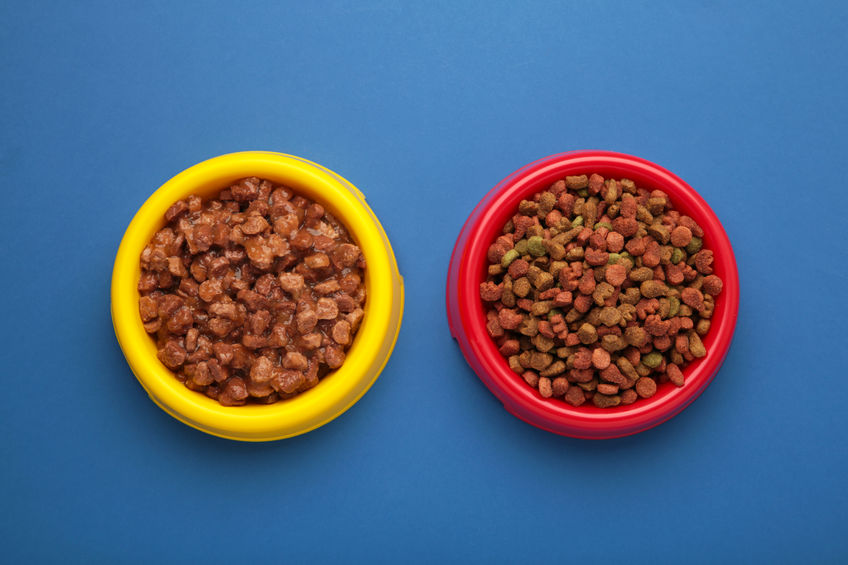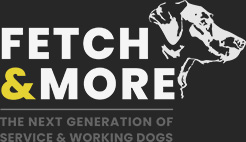
Finding the best food for a dog can feel overwhelming—there are endless bags, cans, and methods. But at the end of the day, feeding your pup comes down to a balance of nutrition, safety, and what makes them thrive.
Is There a “Best Diet” for Dogs?
No, there isn’t a singular best diet for dogs. Every dog is unique, and their dietary needs and feeding frequency will vary based on age, breed, size, activity level, and the dog itself.
There is no shortage of dog food brands to choose from. However, whether it’s kibble, canned, or a fresh-prepared option, balance matters more than brand.
A high-quality commercial dog food that meets basic nutritional standards is usually the safest place to start. These foods are formulated to ensure dogs get the right blend of protein, fat, carbohydrates, vitamins, and minerals.
From there, your pup may benefit from more specialized blends with specific health benefits—such as skin and coat, weight management, senior dog, etc. More often than not, your best bet is talking with your vet to decide if a more specialized blend is necessary.
For those interested in options outside of traditional wet or dry food, homemade diets require careful balance, so it’s wise to work with a veterinarian or canine nutritionist to ensure nothing essential is left out.
Safe Additions You Can Add to Your Dog’s Bowl
Most dog owners take a hybrid approach, opting to add fruits/vegetables, proteins, and/or supplements to their pup’s bowl of kibble or wet food.
A dog’s calorie needs, protein requirements, and metabolism differ significantly from ours. For example, a handful of cheese might not seem like much, but for a 15-pound pup, it can throw their entire daily calorie balance off track.
As always, anything you give your dog needs to be properly prepared. This means: seeds removed, bones removed, and no seasoning.
Some nutrient-rich additions include:
- Fruits: Apple slices, blueberries, and strawberries.
- Vegetables: Carrots, green beans, cucumbers, and blended pumpkin (not pumpkin pie filling).
- Starches and Carbohydrates: Brown rice, quinoa, and sweet potato (steamed).
- Proteins: scrambled or boiled egg, fish (salmon, tuna), white meat (chicken, turkey), red meat (beef, pork).
- Dairy: Cottage cheese, plain yogurt or kefir.
- Supplements: Omega-3, probiotics, freeze-dried food toppers.
Again, it’s important to ensure you properly prepare anything you give your dog. For a comprehensive list of what food is and is not dog safe, check out this AKC resource.
It’s important to keep treats, extras, and supplements within their daily nutritional range. Obesity in dogs is linked to joint problems, diabetes, and reduced lifespan, so moderation is just as important as choosing safe foods.
Support Your Dog’s Wellbeing Beyond the Bowl
Nutrition is one of the biggest factors in keeping a dog healthy and happy—and in the case of service dogs, SAR dogs, or guard dogs, proper nutrition ensures they can perform the tasks they’re trained to do.
In addition to nutrition, keeping your dog enriched and properly trained helps provide them with the structure and mental stimulation needed to build confidence and thrive.
Whether your dog is a new addition or has been part of the family for years, it’s never too late to invest in their behavior, safety, and well-being. At Fetch and More, we have several focused courses to choose from, ranging from general obedience to specialized help such as our service dog training program.
Explore our virtual training programs to find the right course for your dog—or take the next step and become a certified trainer yourself.
Getting started is simple, and if you have any questions, please fill out a contact form, email us, or call us at 201-914-8268.
Dog Feeding FAQs
Feeding your dog comes with plenty of questions, and these FAQs go beyond what we covered in our blog to help you make informed choices.
How often should I feed my dog?
Most adult dogs do well with two meals per day—morning and evening. Puppies usually need three to four smaller meals to keep up with their rapid growth, while seniors may benefit from smaller, more frequent meals depending on their health.
How much should I feed my dog?
Calorie needs depend on weight, breed, age, health status, and activity level. The Pet Nutrition Alliance has their calorie calculator, which can help you determine a good starting point. For more specific guidance, it’s best to work with your vet.
Are homemade or raw diets better than commercial dog food?
Homemade or raw diets can be healthy, but they require careful planning to include all necessary vitamins, minerals, protein, and fats. If you go this route, working with a canine nutritionist or veterinarian is essential.
How do I decide what to feed my dog?
There’s no set answer for what works for every dog; however, starting with a traditional kibble or wet food, unless otherwise directed by your vet, is usually the best bet.
What types of diets and food can I feed my dog?
Options include:
- Commercial kibble
- Canned wet food
- Fresh-prepared or cooked meals
- Raw food diets
- Freeze-dried or dehydrated foods
- Boutique or subscription-based food
- Prescription veterinary diets
- Hybrid feeding (adding safe human foods to a commercial base)
Each has pros and cons, so choosing depends on your dog’s health, lifestyle, and your budget.
Do I always have to talk to my vet when changing my dog’s diet?
If you’re doing a simple change, such as changing food brands or types, you typically don’t need to consult your vet. However, if your dog shows signs like weight loss or gain, digestive issues, lethargy, or other health concerns, you should contact your vet. Also, consider consulting a vet before starting raw feeding, homemade diets, or major ingredient changes.



